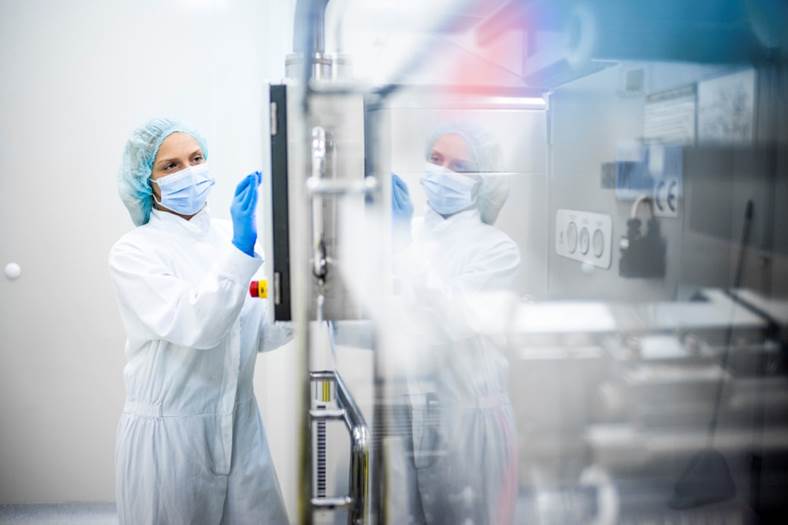
Regulatory organizations are accountable for evaluating the safety and efficacy of recently developed drugs before sanctioning and keeping track of already accepted drugs to ensure their safety and effectiveness for human utilization.
The effectiveness and safety of medications are influenced mainly by the ideas of pharmacokinetics (PK), pharmacodynamics (PD), and Population PK (popPK) modeling and simulation are deployed to gain insights into the qualities of medications and how they relate to different patient demographics.
Pharmacokinetics vs. pharmacodynamics
The contrast between pharmacokinetics and pharmacodynamics is that PK looks at how medications move through the body, and PD focuses on how the body reacts to the drug. Simply put, pharmacokinetics is how the body copes with the medication, and pharmacodynamics is the drug’s impact on the body.
Pharmacokinetics studies how the body processes a drug, including its absorption, distribution and metabolism. Pharmacodynamics portrays a drug’s biological impact on the body and how the body responds to the effect of the drug. PK and PD are intertwined, forming an exposure/response connection. Together, PK/PD can understand how medications affect the body and how the body reacts to drugs.
It is imperative for the advancement and endorsement of all medications to recognize the relationship between exposure and response (PK/PD). Strategic planning and careful pharmacokinetic study design can quicken progress and help meet safety and efficacy objectives.
The importance of PK/PD analyses
PK/PD evaluations are vital for analyzing the effectiveness and safety of medications, as they enable us to measure the concentration of drugs in the body and perceive changes in the body’s physiological responses to the drug. Combined, this information will allow us to determine each medicine’s optimal dosage and administration plan and give an understanding of probable reactions.
By utilizing the understanding acquired from pharmacokinetic and pharmacodynamic studies, pharmaceutical organizations can better design and plan clinical trials, for example, deciding the fundamental measurement or investigating how numerous medications collaborate in the body.
Clinicians use the data from PK and PD studies (detailed in the drug label or package insert) to build customized treatment plans for various patients.
How do pharmacokinetics vs. pharmacodynamics impact pharmaceutics?
Here are the ways in which pharmacokinetics vs. pharmacodynamics impact pharmaceutics:
Bioavailability
Pharmacokinetics concerns the body’s action on the medication, such as drug absorption, distribution, metabolism, and excretion. Hence, drug administration is a must to increase the bioavailability, scope, and rate at which a medication infiltrates the systemic circulation and becomes accessible at its site of action.
Pharmacodynamics, however, concerns the biochemical and physiological effects of the medication on the body. Therefore, medication selection based on pharmacodynamics is cardinal to guarantee optimal drug efficacy.
Dosage forms
Pharmacokinetics is indispensable in deciding the optimal dosage forms for drugs since it depends on the mode of administration and bioavailability. For instance, due to their high bioavailability, intravenous injections deliver instant effects that are not achievable with oral forms.
Conversely, pharmacodynamics is also necessary for drug preparation, as certain dosage forms should assist in boosting drug performance. Opting for a suitable dosage form further impacts the delivery and efficacy of a drug — for example, dispensing oral, intravenous, topical, intramuscular, and subcutaneous medications.
Every route of administration brings certain advantages and disadvantages. For instance, rapidly absorbed drugs may be best administered intravenously, while drugs with slow absorption may be best given orally. In addition, a topical formulation might be favored for drugs having a localized action. At the same time, an oral or intravenous route may be better for medicines calculated to have a systemic effect.
Drug interactions
Interactions between drugs can arise when a different medication, or mixture of drugs, affects how a primary drug works within the body. For instance, metabolizing two medicines can challenge the equivalent enzyme in the body, obstructing each other’s impact.
Drug interactions can profoundly change.
These influences can significantly alter the restorative impacts and safety of the recommended medication. Pharmacists must comprehend the unpredictable connections between drugs and the body to assess and properly prepare medicines for safe and successful utilization.
To gain more knowledge on drug interactions, the University of Findlay has an online pharmacy degree program that fully prepares students for licensure as accomplished pharmacists who can improve the quality of life for patients in their community. This pioneering program is divided into four academic years with increasing responsibility and independence and includes didactic coursework, on-campus immersions, and experiential learning.
Drug monitoring
By monitoring drug usage with PK and PD in mind, pharmacists can better advise their patients on using medications safely and appropriately. The process involves tracing the amount of a drug prescribed, the quantity consumed, and how it is utilized. It requires a complete, multi-layered approach to probing how pharmacokinetics and pharmacodynamics collaborate.
Understanding how these two realms interact can facilitate guaranteeing that a medication is being used suitably, that the dosages prescribed are accurate, and that any side effects are being tracked. By tracking drug utilization with pharmacokinetics and pharmacodynamics in mind, pharmacists can better advise their patients on taking medications safely and correctly.
This will also help to guarantee that medicines are moving through suitable networks of sale and application. At the same time, any discrepancies or unlawful prescription behavior can be monitored and reported as necessary.
Final thoughts
Pharmacokinetics and pharmacodynamics both contribute significantly to determining the potency of a drug. Pharmacokinetics details how the body absorbs, circulates, metabolizes, and removes drugs. Conversely, pharmacodynamics explores how drugs engage with cells and organs.
This intelligence helps pharmacists comprehend the consumption, circulation of medicines, elimination by the body, and how drugs interact with the body’s cells and organs. This expertise is to design the medication’s most suitable dosage, route, and formulation to deliver the optimum therapeutic result.




